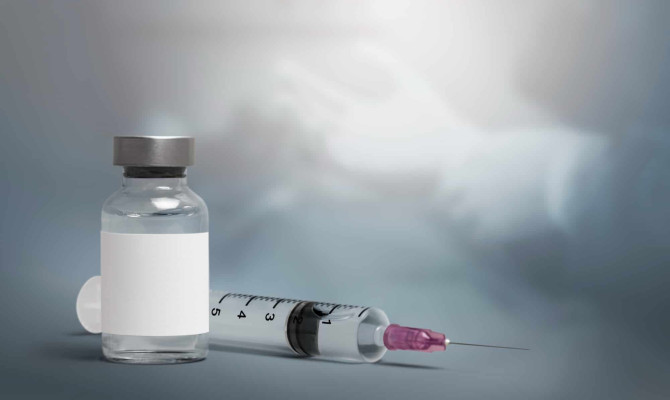Alecensa : What do I need to know?

- Alecensa
- 16 Aug 2023
Overview
What is Alecensa?
When a lung cancer called non-small-cell lung cancer (NSCLC) has advanced in adults and the disease has either not been treated in the past or has been treated in the past with a cancer drug called Xalkori (crizotinib), a medicine called Alecensa is used to treat the disease. Alecensa is a cancer medicine.1Overview| Researched based study from Springer.com
Orphan drug status has been granted to alectinib in Japan, where it has been allowed for therapy in patients with ALK fusion-gene-positive non-small cell lung cancer (NSCLC) that is unresectable, progressed, or has returned after previous treatment.1Overview| Researched based study from Springer.com
Alecensa is used alone, that is not in combination with other drugs, and only if the non-small cell lung cancer is ‘ALK-positive.’ This implies that the cancer cells have particular faults influencing the gene that generates a protein termed ALK (anaplastic lymphoma kinase). In order to utilize Alecensa, the NSCLC must be “ALK-positive.” The pharmaceutical product Alecensa is formulated with the active ingredient alectinib.

Indications
Indications for the use of Alecensa
Alecensa is prescribed to people who have been diagnosed with non-small cell lung cancer, which is a subtype of lung cancer. It is employed in the cases if the patient’s cancer:4Indications| Researched based study from Healthdirect.org.au
- Is ALK-positive, which indicates that your cancer cells have a defect in a gene called ALK
- Patient is progressed or has moved to another part of your body (metastatic)
- Has a faulty gene called anaplastic lymphoma kinase (ALK)
Alecensa is able to inhibit the ALK protein from carrying out its function. There is evidence that points to the participation of this protein in the expansion and dissemination of cancer cells. There is a possibility that alecensa will halt or significantly reduce the progression of your cancer. Furthermore, there is a possibility that it will facilitate the reduction of the size of your cancer.
Consumption
What are some methods that Alecensa can be utilized in?
- It is necessary to receive a prescription in order to purchase Alecensa, and the treatment should only be initiated and continued under the direction of a medical professional who has prior experience treating cancer patients with pharmaceutical agents.3Consumption| Researched based study from Europa.eu
- The presence of genetic abnormalities that influence ALK, often known as a “ALK-positive status,” should be verified in advance using the proper techniques.
- These capsules contain one hundred and fifty milligrams of the medication. The typical suggested dose is eight capsules, to be taken twice a day with meals, for a total of 1,200 milligrams.3Consumption| Researched based study from Europa.eu
- Patients who have severe liver impairment should take the prescribed dose of three capsules twice a day with food, which is 900 mg in total.
- In the event that adverse effects manifest themselves, the attending physician may lower the prescribed dosage or temporarily suspend treatment. In certain circumstances, it is recommended that treatment be discontinued for good.
Benefits
The benefits of using Alecensa?
In three separate investigations, it was determined that the drug alecensa was successful in treating patients with ALK-positive non-small cell lung cancer.3Benefits| Researched based study from Europa.eu
No traces of cancer
- The patient’s response to therapy was evaluated using body scans and standardized criteria for evaluating solid tumors; a complete response was considered to have occurred when there were no detectable traces of the cancer in the patient’s body.
Good response rate
- In the first research, almost 52% of patients who were administered Alecensa were regarded by the treating clinicians to have displayed either a complete or partial reaction to the medication during analysis. In the first research, the response was sustained for a total of 14.9 months on average.
- In the second study, the total or partial response rate during assessment was 51% (62 out of 122 patients). This indicates that the treatment was successful in some patients but not all. In the second research, the response was sustained for a total of 15.2 months on average.3Benefits| Researched based study from Europa.eu
Management with less discomfort
- In the third research, there were a total of 303 patients. All of them had ALK-positive NSCLC and had never administered therapy for it. The primary criterion for determining which treatment was more effective, Alecensa or Xalkori, was the length of time patients were able to live without their condition deteriorating while taking either medication. In comparison, after one year of treatment, 68% of patients given Alecensa and 49% of those given Xalkori were still alive without their condition deteriorating.3Benefits| Researched based study from Europa.eu
Side effects
Possible side effects of Alecensa
People who have lung cancer caused by non-small cells can benefit from alecensa, despite the possibility that it will cause undesirable side effects. They can be serious at times, but for the most part, they are humorous and lighthearted.4Side effects| Researched based study from Healthdirect.org.au
Mild to Moderate side effects
Notify your primary care physician or your pharmacist if you observe any of the following symptoms and they make you concerned:4Side effects| Researched based study from Healthdirect.org.au
- Rash
- Diarrhea or constipation
- Fatigue
- Dizziness
- Nausea and puking
- Swollen hands, feet, or around the eyes
- Issues with eyesight such as blurred or defected vision, black dots or white spots in your vision, double vision
- Pain in the head
- Sensitivity to sunlight
- Inflammation in the mouth
- Altered taste perception
- Increased body weight
Severe side effects
Notify your primary care physician as soon as possible or report directly to the emergency department of the hospital that is most conveniently located to you if any of the following occur:
- Short breath or difficulty breathing, cough
- Fever
- Yellowing of skin or the whites of the eyes
- Slow heartbeat (bradycardia)
- New or worsening signs and symptoms of muscle problems, including unexplained muscle pain that you cannot get relief from, tender muscle, or weakness
- Decrease in urine, confusion, new or swelling of legs, ankles, or around the eye areas that get worse with time4Side effects| Researched based study from Healthdirect.org.au
- Tiredness, nausea, chest pain, or pressure.
Adverse effects
Adverse drug reactions
Patients who were given Alecensa reported the following extra clinically significant adverse medication reactions:4Adverse effects| Researched based study from Healthdirect.org.au
- Weight gain
- Photosensitivity reaction
- Stomatitis
- Interstitial lung disease
- Drug-induced liver injury
Precautions
Warnings and precautions of using Alecensa
Hepatotoxicity
- Monitor liver laboratory tests once every two weeks during the first three months of treatment, then once every month and as clinically required, including more frequent testing in individuals who have elevated levels of transaminases and bilirubin.
- In the event that your ALT, AST, or bilirubin levels become dangerously elevated, you should immediately stop using ALECENSA, then gradually reduce your dosage, or stop taking it altogether.2Precautions| Researched based study from Nlm.nih.gov
Interstitial Lung Disease (also known as ILD), also known as Pneumonitis
- Alecensa should be withheld immediately in patients who have been diagnosed with ILD or pneumonia, and it should be discontinued permanently if there are no other plausible causes of ILD or pneumonia that have been discovered.2Precautions| Researched based study from Nlm.nih.gov
Renal impairment
- ALECENSA should not be taken if the patient has considerable renal impairment.
- If the patient recovers, ALECENSA can be taken again at a lower dose, or the medication can be stopped completely.
Bradycardia
- Maintain a regular check on both your heart rate and blood pressure. In the event that symptoms appear, ALECENSA should be withheld before the dose is lowered or the medication should be stopped completely.
CPK levels
- Patients who report unexplained muscle pain, soreness, or weakness should have their creatine phosphokinase (CPK) levels checked every two weeks throughout the first month of treatment.
- Patients who have severe myalgia should also have their CPK levels checked. In the case of severe CPK rises, the dose should be withheld, then either reduced or restarted.2Precautions| Researched based study from Nlm.nih.gov
Hemolytic Anemia
- If there is a suspicion of hemolytic anemia, ALECENSA should not be given. If it is determined that you have hemolytic anemia, your doctor may recommend that you either resume treatment at a lower dose once the condition has improved or stop taking the medication altogether.2Precautions| Researched based study from Nlm.nih.gov
Embryo-Fetal Toxicity
- ALECENSA may be harmful to the developing fetus. Encourage women who are capable of bearing children to practice responsible birth control and inform them of the potential dangers to an unborn child.2Precautions| Researched based study from Nlm.nih.gov
Mechanism
Detailed Explanation of the Working Mechanism of Alecensa
The mechanism of action of Alecensa can be understood as follows:
- ALK and RET are the targets of the tyrosine kinase inhibitor known as alectinib.
- Alectinib suppressed ALK phosphorylation as well as ALK-mediated stimulation of the downstream signaling pathways STAT3 and AKT in preclinical investigations. This resulted in a reduction in the survival of tumor cells in numerous cell lines that carried activating mutations, amplifications, or fusions in the ALK gene.
- Similar levels of in vitro activity and potency were seen for the primary active metabolite of alectinib, which is designated as M4.2Mechanism| Researched based study from Nlm.nih.gov
- Alectinib and M4 showed efficacy against numerous mutant versions of the ALK enzyme both in vitro and in vivo. This activity included some mutations found in NSCLC tumors in patients who had progressed while taking crizotinib.
Takeaway
Takeaway
In people with advanced non-small-cell lung cancer (NSCLC) that has not been treated with Xalkori (crizotinib) or has progressed during treatment with Xalkori, Alecensa is used to treat the disease.
When taken alone, Alecensa is reserved for cases of NSCLC that are deemed to be “ALK-positive,” meaning that the cancer cells carry mutations in the ALK (anaplastic lymphoma kinase) gene.
Any feedback on this article?
 This Articles content was accurate
This Articles content was accurate Very Informative Article
Very Informative Article I have a question or a comment
I have a question or a comment
 This article contains inaccurate content
This article contains inaccurate content This article was not helpful
This article was not helpful I have a question or a comment
I have a question or a comment
We appreciate your helpful feedback!
Checkout our social pages
References
-
Springer Nature
Alectinib: A Review of Its Use in Advanced ALK-Rearranged Non-Small Cell Lung Cancer | Overview
-
Daily Med
ALECENSA- alectinib hydrochloride capsule | Precautions | Mechanism
-
European Medicines Agency
Alecensa | Consumptions | Benefits
-
https://media.healthdirect.org.au/medicines/GuildLink_Information/272115/CMI/rocalece10720.pdf
Alecensa | Indications | Side effects | Adverse effects






































